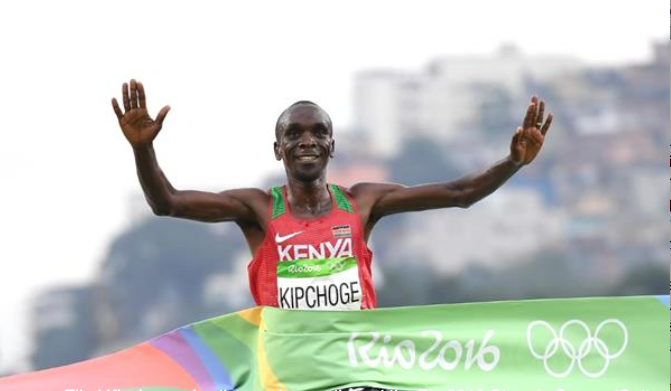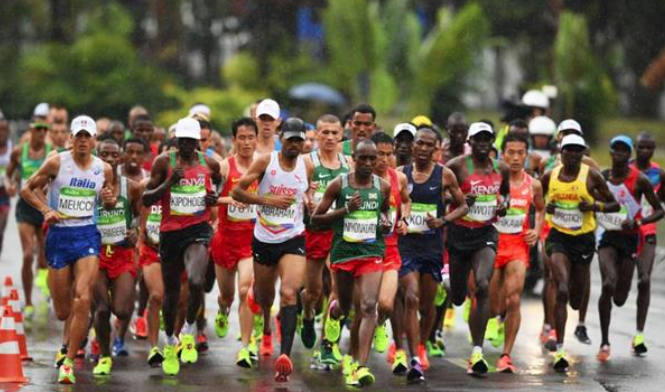
In the din of demonetization with its befuddling changing goal posts the dropping dead on a morning run of one of the leading gynecologists’ of Mumbai went largely unnoticed. True to form, the print and electronic media hardly raised a whisper on why a middle aged man who had numerous marathons under his belt and who regularly ran 10 kilometers every morning collapse and die whilst happily engaged in his morning run? There have been of course equally if not more serious issues to be dilated upon, ranging from lakhs of workers being waylaid and scores of people perishing while waiting their turn to draw their own money from the bank or an ATM machine. No serious commentary has emerged on the tantalizing reasons for the untimely death of a seemingly superbly fit leading gynecologist.
Physicians have for decades advised exercise as the best antidote for prevention of ill health, apart from statins, ACE inhibitors and beta-blockers. The Potsdam study unequivocally demonstrated that a healthy life consisting of moderate exercise and decent diet substantially cut down development of heart attack, stroke, diabetes and even cancer. Marathon running was considered by researchers to be the best immunization against atherosclerosis.
A study on more than a crore marathoners running the event over a decade revealed only 59 deaths. A remarkably small mortality figure for one of the most demanding sports. More deaths occurred in males, and 50% of participants died in the last 1 mile of the race. The very reassuring take home message is that despite the rigor of running a little more than 42 km most young and middle aged adults can handle the stress well. The modern distance of the marathon of 42.195 km was established at the London Olympics in 1908. Hundreds of thousands of runners participate in marathon races across the globe. Most are not elite runners but are embracing the event for personal goals. Most international guidelines recommend moderate exercise for the prevention of cardiovascular disease.
Cardiovascular benefits of endurance exercise include improved endothelial function, increase in coronary reserve, greater tolerance of myocardial ischemia, raised ventricular fibrillation threshold, reduced blood pressure and better elasticity of blood vessels. It has been observed that regular endurance exercise alters structural and functions elements of the heart. Middle aged amateur marathon runners ramp up their cardiac out put from a normal 5 liters per minute to 20-25 liters per minute for 2-4 hours. These prolonged phases of stress lead to structural and functional maladaptation. There could be potentially adverse changes in the coronary arteries, the electrical conduction system and even scarring /fibrosis of cardiac chambers.
2 D Doppler echo studies done soon after a marathon have shown diastolic dysfunction in middle-aged participants. There is however improved left ventricle diastolic function in endurance trained athletes in the long run. Cardiac biomarker levels (troponin and BNP) are increased after a marathon to come down to normal values in 24-48 hours without any clinical significance. Magnetic resonance imaging has failed to detect myocardial necrosis despite raised troponin levels.
Long-term endurance exercise training makes larger arteries with decreased wall stiffness. Increased clotting potential has been documented after marathon running. Intensive exercise in untrained individuals leads to increased thrombin generation, platelet hyperactivity, and increased activity of coagulation factors. In contrast regular endurance runners have heightened fibrinolysis or clot dissolution.
Physical activity of moderate intensity is associated with all cause and cardiac mortality, but frequent marathon runners (run 5 marathons in last 3 years duration) have been found to have calcium scores on CT imaging greater than matched controls. The explanation provided is increased inflammatory stress of coronary arteries by intensive endurance exercise such as marathon running.
A 5-fold increase in prevalence of atrial fibrillation (AF) has been documented in middle-aged endurance athletes. The reasons put forward are alteration in autonomic system, shift of fluids, electrolyte abnormalities, chronic systemic inflammation and fibrosis of atria. Complex ventricular ectopy including ventricular tachycardia (VT) is also well documented in endurance-trained athletes. The ectopy originates from a dilated right ventricle (RV) or the interventricular septum. The clinical ramifications of ventricular ectopy are open to debate. Sudden cardiac death fortunately is rare as discussed earlier. It would be prudent to advise the middle aged long distance runner to restrict herself to half-marathons rather than attempt a full marathon to fully enjoy the beauty and thrill of running.
Duration and intensity of exercise are crucial in any discussion on development of AF or total mortality in long distance runners. Maximum cardiovascular benefits are achieved with moderate doses of exercise while benefits are lost with high intensity and prolonged routines. Two studies based entirely on questionnaires have reported important conclusions while raising questions at the same time. The first study has shown that frequent (>5 h/week) intensive exercise in young adults (30 years of age) predicts AF incidence later in life (60 years and older) without depending on whether exercise was continuous. Animal models have revealed intensive exercise promotes atrial fibrosis that can act as a substrate for AF later on. This can explain increased prevalence of AF in middle aged people who have indulged in intensive exercise when they were in their thirties.
High intensity exercise begun at middle-age people does not raise prevalence of AF. It is possible that high intensity exercise of a middle aged person is substantially less strenuous than that performed by a 30 year old. ‘Intense exercise’ at 60 years may produce less haemodynamic disturbance compared with ‘intense exercise’ at 30 years of age. Further studies are needed to explain this phenomenon.
During a median follow-up of 12 years, 4568 cases of AF were diagnosed in 44,420 men free from AF at start. Risk of developing AF was greater in those who exercised >5 h/week at age 30 and quit exercising later in life. Walking or bicycling at middle age was inversely associated with risk of AF (Heart May 2014)
Another studied followed 1038 heart patients for 10 years (Heart May 2014) The researchers found that patients exercising strenuously for 2-4 days/week were at the lowest risk of cardiovascular events and death. On the other hand patients who did not exercise at all or who exercised every day presented with higher event rates. These patients were no different from patients in other studies. Other small studies have also suggested greater clinical events with more extensive and frequent exercise schedules. One reason for adverse events is development of a pro-inflammatory state with exercise that in turn sparks atherosclerosis. It remains unknown why frequent exercise triggers heart disease in some and not in others.
An exercise threshold of >5h/week and daily intense exercise may trigger AF or cardiovascular events. The researchers concluded that their study confirmed previous data on increased adverse outcomes with physical inactivity, but that daily strenuous physical activity increased cardiovascular mortality, indicating a reverse J-shaped association of physical activity with cardiovascular mortality.
The heart disease that develops from intense endurance training is also called Phidippides cardiomyopathy after the Greek messenger who died after running 175 miles in 2 days. The heart forms fibrosis or scar tissue that accumulates over time due to excessive and repetitive stretching of the heart ventricles pumping large amounts of blood during prolonged training and competition.
The benefits of exercise are to be repeatedly reinforced with the general public while underlying the fact that too intense a training regimen may be counter productive as with all other thing in life. A threshold does exist where risk outweighs benefit.
Death while running a marathon is a rare albeit a deeply traumatizing event for family and friends. The RACER study examined the 59 deaths among 10.9 million participants of marathons and half-marathons between 2000 and 2010. Men had an increased rate of risk of cardiac events that averaged five times than that of women. Younger runners (<40 years) experiencing cardiac arrest were almost seven times less likely to survive than older runners >40 years. The younger group suffered predominantly hypertrophic cardiomyopathy while older runners had ischemic heart disease, a condition more responsive to resuscitation. Research estimates range from 0.5 to 2 deaths per 100,000 marathon runners in a given race (N Engl J Med 2012; 366:130-40).
Please note that deaths whilst running a marathon are exceedingly rare, hence do not stop participating in one. It would be advisable not too run too many marathons during middle age because there is a chance of damaging the heart in some. Identifying the vulnerable few is not possible with current technology. Mortality is increased in people who exercise every day for long duration and also very much in those who are sedentary. Intensive exercise at young age develops a substrate for atrial fibrillation many desserts larer in middle age. But 10 to 15 minutes of brisk walking or jogging 5 days a week provides considerable cardiovascular benefits. Moderate exercise 2-4 times a week substantially cuts down the risk of stroke, diabetes and also cancer. It would be cost effective for a regular middle aged endurance runner to get an annual ECG and 2D echocardiogram to pick up a maladaptive alteration of the heart. An ECG and a 2D echocardiogram should be mandatory for a middle aged person embarking on running a long distance race or beginning any exercise regimen.
Crucially, any sport played for 15 minutes 3-4 times a week is the best guarantee against future disease.



